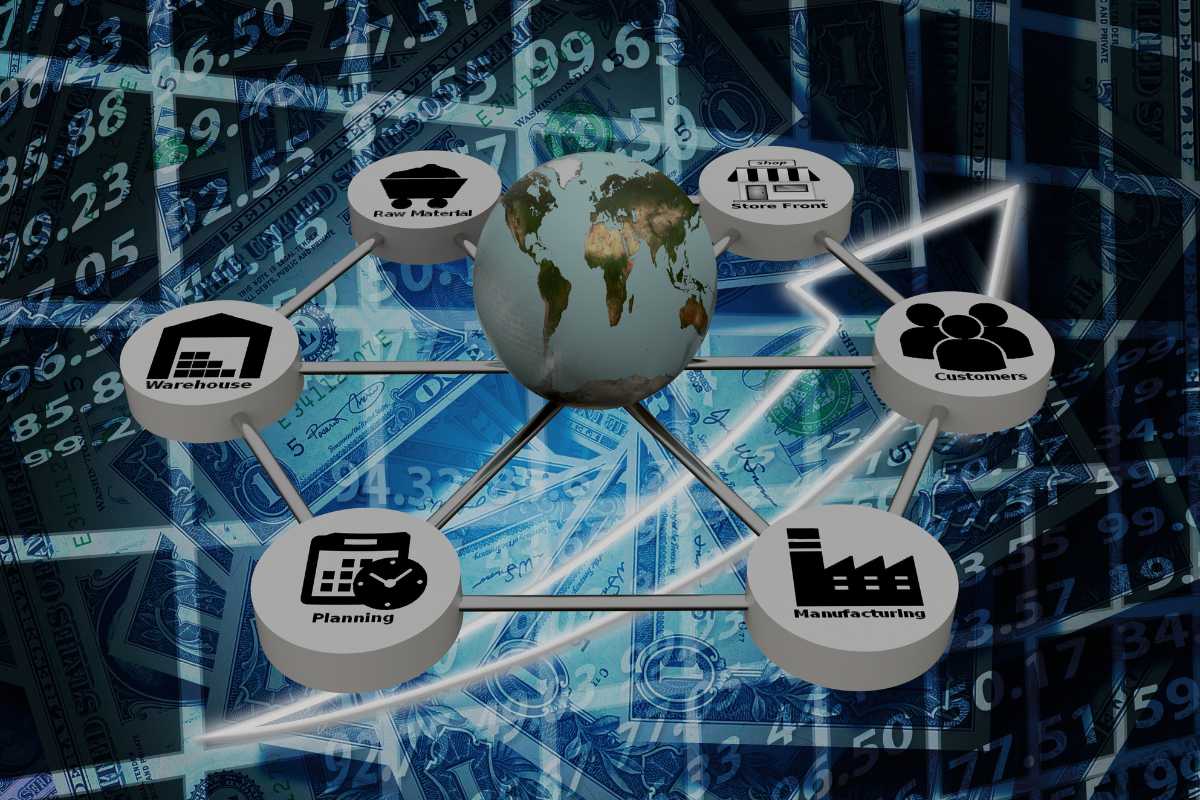From Chaos to Clarity: AI-Powered Supply Chain Optimization in the Age of Uncertainty
In an era marked by global disruptions, supply chain volatility has become the new normal. The once predictable flow of goods, services, and resources is now at the mercy of geopolitical tensions, climate change, economic instability, and unforeseen events like pandemics. For businesses, supply chain resilience has shifted from being a competitive advantage to an existential requirement.
But amid this uncertainty, a powerful ally has emerged, Artificial Intelligence (AI). With its ability to analyze vast datasets, predict disruptions, and optimize decision-making in real time, AI is revolutionizing supply chain management. What was once a web of complexity and chaos is being transformed into clarity, agility, and resilience.
This article explores how AI-powered supply chain optimization is reshaping the business landscape, the technologies driving this transformation, real-world examples, and what the future holds in the age of uncertainty.
The Rising Chaos in Global Supply Chains
Over the past few years, supply chains have faced unprecedented turbulence:
- Pandemic Shockwaves: COVID-19 exposed fragile global dependencies, halting production and creating shortages across industries.
- Geopolitical Tensions: Trade wars, sanctions, and regional conflicts continue to disrupt supply routes and resource availability.
- Climate Change and Natural Disasters: From floods to wildfires, extreme weather events are delaying shipments and damaging infrastructure.
- Consumer Demands: The rise of e-commerce has increased expectations for faster, cheaper, and more reliable deliveries.
- Inflation and Labor Shortages: Rising costs and workforce gaps have strained supply chain efficiency.
The result? A constant state of unpredictability. Traditional supply chain models, based on linear forecasts and manual processes, are ill-equipped to handle this complexity. This is where AI steps in.
How AI Brings Clarity to Supply Chain Management
AI isn’t just about automation; it’s about intelligent decision-making. By processing massive amounts of structured and unstructured data, AI can provide insights that human managers simply cannot achieve at scale. Here’s how AI is bringing order to chaos:
1. Predictive Analytics for Demand Forecasting
Instead of relying on historical sales alone, AI-powered systems analyze diverse datasets, market trends, weather patterns, social media sentiment, and even economic indicators to predict demand with greater accuracy.
- Example: A global retailer can anticipate spikes in demand during extreme weather events and stock essential items ahead of time.
2. Real-Time Visibility and Monitoring
AI-driven platforms integrate data from IoT sensors, logistics partners, and ERP systems to provide end-to-end visibility across the supply chain.
- This transparency allows businesses to detect bottlenecks, track shipments in real-time, and proactively respond to disruptions.
3. Dynamic Route Optimization
AI algorithms process traffic conditions, fuel costs, and geopolitical risks to determine the most efficient shipping routes.
- Example: During port closures, AI can reroute shipments instantly, minimizing delays and costs.
4. Supplier Risk Management
AI systems assess suppliers based on performance, financial stability, and external risk factors. By continuously monitoring news and financial data, businesses can detect vulnerabilities before they escalate.
5. Inventory Optimization
AI ensures the right balance between overstocking (which increases costs) and understocking (which leads to lost sales). By dynamically adjusting reorder points, businesses maintain lean yet resilient inventories.
6. Automation and Robotics
AI-powered robots in warehouses streamline picking, packing, and shipping. Combined with machine learning, these systems continuously improve efficiency while reducing labor dependency.
7. Sustainability Integration
With ESG (Environmental, Social, Governance) concerns at the forefront, AI helps companies measure carbon footprints, optimize routes to reduce emissions, and identify sustainable suppliers.
The Technologies Driving AI in Supply Chains
AI is not a standalone tool but a convergence of technologies. The following innovations are propelling supply chain optimization:
- Machine Learning (ML): Enables systems to learn from data and improve predictions over time.
- Natural Language Processing (NLP): Analyzes unstructured data such as news, customer reviews, or social media to identify emerging risks.
- Computer Vision: Used in warehouses for automated quality control and tracking goods.
- Digital Twins: Virtual replicas of supply chains allow simulation of different scenarios to test resilience and identify weaknesses.
- IoT (Internet of Things): Provides real-time data from sensors embedded in goods, vehicles, and equipment.
- Blockchain: Enhances transparency and traceability, ensuring ethical sourcing and reducing fraud.
Together, these technologies transform supply chains from reactive systems into proactive, adaptive ecosystems.
Real-World Examples of AI in Supply Chain Optimization
Amazon: The Pioneer of AI-Driven Logistics
Amazon uses AI across its supply chain, from predictive analytics for inventory to warehouse robotics and delivery optimization. Its machine learning models anticipate consumer demand with uncanny accuracy, ensuring efficiency while meeting tight delivery windows.
Maersk: AI for Shipping Resilience
Maersk, the global shipping giant, employs AI to forecast port congestion, optimize shipping routes, and reduce fuel consumption. This has helped minimize delays and lower operational costs.
Walmart: Predicting Consumer Behavior
Walmart integrates AI and big data to forecast demand, optimize pricing, and streamline restocking. During supply disruptions, Walmart’s AI systems quickly reroute inventory to ensure availability in priority markets.
Siemens: Sustainability Meets AI
Siemens leverages AI and digital twins to optimize production and reduce energy consumption across its supply chains, aligning efficiency with sustainability goals.
These case studies highlight the versatility of AI in managing complexity and creating resilience.
Benefits of AI-Powered Supply Chains
- Resilience Against Disruptions: AI enables proactive responses to global shocks.
- Cost Efficiency: Dynamic optimization reduces waste, fuel, and labor costs.
- Customer Satisfaction: Accurate forecasting and faster deliveries enhance brand loyalty.
- Sustainability: AI-driven efficiency reduces carbon footprints and supports ethical sourcing.
- Competitive Advantage: Organizations with AI-enabled supply chains outperform slower, less adaptive competitors.
Challenges of AI Integration
While the benefits are significant, AI adoption is not without hurdles:
- Data Quality and Availability: AI is only as effective as the data it processes. Poor data integration across fragmented systems can limit its potential.
- Implementation Costs: Deploying AI solutions, especially at scale, requires substantial investment in infrastructure and talent.
- Talent Gap: Skilled AI professionals and supply chain experts are in short supply, making execution challenging.
- Cybersecurity Risks: With increased reliance on digital systems, supply chains become more vulnerable to cyberattacks.
- Change Management: Employees may resist AI-driven automation due to fear of job displacement, requiring careful cultural adaptation.
The Future of AI in Supply Chain Management
Looking forward, AI will move from being an enabler to the backbone of supply chain management. Some key trends include:
- Self-Healing Supply Chains: Systems that detect, adapt, and resolve disruptions autonomously.
- Hyper-Personalization: AI will tailor supply chains to individual customer preferences, improving experiences at scale.
- Sustainability at Scale: AI will integrate ESG data into every decision, making sustainability non-negotiable.
- Collaboration Ecosystems: Blockchain and AI will enable greater transparency and collaboration across industries.
- AI-Augmented Human Decision-Making: Rather than replacing humans, AI will empower leaders with deeper insights to make faster, smarter choices.
By 2030, the global AI in supply chain market is projected to exceed hundreds of billions, cementing its role as a core driver of business success.
Conclusion
In an age defined by volatility, businesses can no longer rely on outdated supply chain models. The chaos of today’s world requires clarity, and AI is delivering it. From predictive analytics to real-time monitoring, from risk management to sustainability, AI-powered supply chains are transforming uncertainty into opportunity.
Organizations that embrace this technology will not only survive the turbulence but thrive in it, becoming resilient, adaptive, and future-ready. As businesses navigate the complexities of tomorrow, one truth is clear: the future of supply chains is intelligent, agile, and powered by AI.













